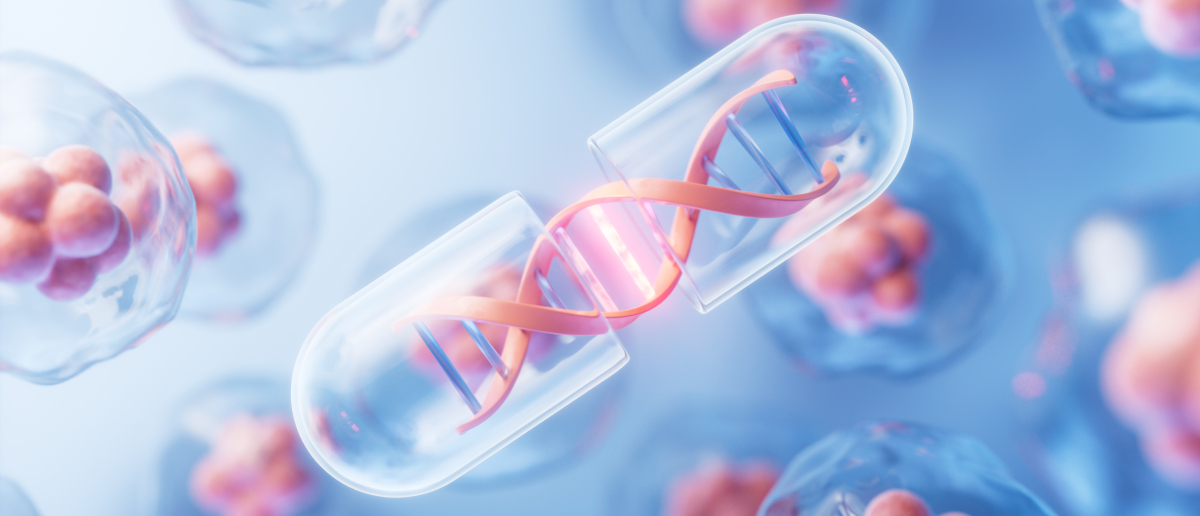Last Friday, the FDA (U.S. Food and Drug Administration) approved two new and very expensive sickle cell disease (SCD) treatments. The two new drugs, Casgevy and Lyfgenia, are both types of gene therapy, i.e., they rewrite the patients’ DNA. This type of therapy is both amazing and frightening at the same time.

What is Sickle Cell Disease?
Sickle Cell Disease (SCD) is a disease of the hemoglobin (Hb) within the red blood cells. As the Hb releases oxygen, it changes shape, and consequently changes the shape of the red blood cells it is carried in. The normally soft, floppy round red blood cells (RBCs) become hard, narrow and sickle shaped by the internal Hb strands, causing the RBCs to get stuck and block the blood vessels. The result is a drop in oxygen delivery which leads to excruciating pain (think rubber band around a finger) and in severe cases, irreversible damage to the organs they get stuck in.
Signs of sickle cell disease usually begin at six months of age, as soon as we begin moving and our bodies demand more oxygen. The low oxygen states, cold, dehydration and infections are the triggers. The disease limits physical activity, and the average life expectancy of a person with SCD in the developed world is 40-60 years.
Sickle cell disease is a recessive genetic disease, so if you have one copy you are a carrier and usually do not have any symptoms. If you have two copies of the gene, one from each parent, you have sickle cell disease.
Sickle cell disease affects 20 million people world wide, while many millions more are carriers. It also occurs in parts of India, Southern Europe, West Asia, North Africa and is commonly found among people of African origin (sub-Saharan) living in other parts of the world. The condition was first described in the medical literature by American physician James B. Herrick in 1910. In 1949, its genetic transmission was determined by E. A. Beet and J. V. Neel. In 1954, the protective effect against malaria of sickle cell trait was described, which helps to explain its geographic origin, much like Thalassemia.
How is Sickle Cell Disease Treated?
Prevention has been the mainstay of treatment. Avoiding triggers is key, but is also very limiting. Painful crises are treated with hydration, analgesics, and in emergency situations blood transfusion. As oxygen levels increase, the red blood cells return to their normal shape and can begin to flow.
A small percentage of people have been cured by a transplant of bone marrow cells, but these new therapies are directed at repairing the sickle cell gene in the patient’s own bone marrow cells.
Casgevy
Casgevy in particular is the first FDA-approved therapy utilizing CRISPR/Cas9 technology, giving the drug the ability to cut and edit DNA in targeted areas. This technology has been used in the lab; however, this is the first time it has been used for treatment of a disease in the general population.
The patient’s own blood stem cells are treated and these cells are transplanted back into the patient. They enter the bone marrow, reproduce and increase the production of fetal hemoglobin, which facilitates oxygen delivery. So, how does this help? In patients with sickle cell disease, increased levels of fetal hemoglobin prevent the sickling of red blood cells.
Lyfgenia
Lyfgenia is also a cell-based gene therapy. It uses a vector for genetic modification. Older vectors used to only transform the cell during division but newer vectors, lentiviral vectors, can transduce cells independently of their division status, making them ideal for gene therapy. If you google “lentiviral vector” this holiday season, they are on sale for 50% off from selected labs.
With Lyfgenia therapy, the patient’s blood stem cells are genetically modified to produce HbAT87Q, which functions similarly to hemoglobin A, the normal adult hemoglobin. Red blood cells containing HbAT87Q have a lower risk of sickling and occluding blood flow. These modified stem cells are then delivered to the patient in the same way as with Casgevy therapy.
Who is a Candidate for Sickle Cell Therapy?
Both drugs are FDA approved for the treatment of patients 12 years of age and older with sickle cell disease and a history of forming clots and emboli.
The Risks of Casgevy and Lyfgenia
If this sounds too good to be true, here’s the rest of the story. The most common side effects of Casgevy are low levels of platelets and white blood cells, mouth sores, nausea, musculoskeletal pain, abdominal pain, vomiting, febrile neutropenia (fever and low white blood cell count), headache and itching.
Lyfgenia can cause stomatitis (mouth sores of the lips, mouth, and throat), low levels of platelets, white blood cells, and red blood cells, and febrile neutropenia (fever and low white blood cell count), consistent with chemotherapy and underlying disease. Hematologic malignancy (blood cancer) has occurred in patients treated with Lyfgenia. Sometimes this is the result of “off-target” edits, i.e. changing the wrong gene. Patients receiving this product should have lifelong monitoring for these malignancies.
The Cost of Treatment
Vertex said Casgevy will be priced at $2.2 million, while Bluebird set the wholesale price of Lyfgenia at $3.1 million. The Institute for Clinical and Economic Review, which advises drugmakers and payers, estimated an appropriate price for Casgevy would be between $1.35 million and $2.05 million per patient. Without insurance, who can afford this one-time treatment? Moreover, about half of the people living with sickle cell are lower-income individuals on Medicaid, where even 1% of the cost would be prohibitive. The focus needs to be on the overall good for society. Presumably, patients would no longer need other treatments and would have fewer emergency department visits. Allowing sickle cell patients to have productive, pain-free lives.
Previous Post Next Post